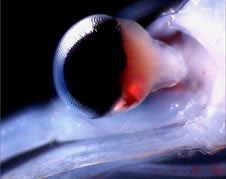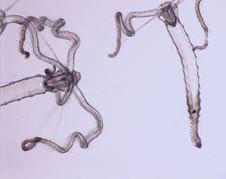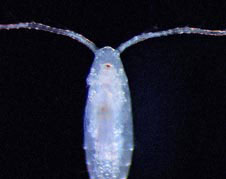Project Information

This project is a collaboration between the University of Tasmania and CSIRO Marine and Atmospheric Research. This website had its genesis as the Guide to the Zooplankton of South Eastern Australia (number 10 in the Fauna of Tasmania series) that was first published in 2003.
Funding
The project is supported by the Integrated Marine Observing System (IMOS), University of Tasmania (IMAS), and CSIRO Marine and Atmospheric Research. We particularly acknowledge Tim Moltmann (IMOS) and Tim Lynch (CSIRO) for their support of this project.
Funding for the original Guide to the Zooplankton of Southeastern Australia was provided by the Australian Biological Resource Study (ABRS), a programme within the Parks Australia Division of the Department of the Environment and Water Resources.
Samples

Samples were collected within coastal waters from around Australia. Most images of live specimens were collected off North Stradbroke Island (Queensland) or eastern Tasmania.
Samples were processed and images taken as soon as possible, as we aimed to capture the natural appearance and colouration of the zooplankton. However as zooplankton are often preserved prior to sorting and identification, we have also photographed and represented preserved specimens of some taxa for comparison.
Please note that where a preserved animal is photographed this is stated in the caption. In addition, as the preference for zooplankton sorting under a microscope varies, in some cases specimens are represented both on light and dark backgrounds.
Photography

All photos, unless otherwise specified, were taken by Anita Slotwinski at IMAS (Hobart) or CSIRO (Brisbane) or by Claire Davies at CSIRO (Brisbane).
The zooplankton were photographed with a Leica DC 300F camera mounted on a Leica MZ75 stereo microscope (0.77 to 6.3 x magnification) and a Leica 307-072.057/BZ:11 compound microscope (5 to 100 x magnification).
The scale on photographs is presented in µm units. Please note that 1000 µm is equal to 1 mm.
These photographs can be reproduced for further educational purposes, but only if the graphical content is not altered, and the photographer and this website are fully acknowledged.
Permission must be sought if photographs are to be used for further publication purposes in books etc. Please see the contacts page for relevant contact information.
Further information regarding the copyright of this site is available on the disclaimer page.
Acknowledgements
The authors wish to acknowledge the Integrated Marine Observing System (IMOS) for supporting CSIRO involvement in this guide and providing seed funding. We would also like to thank Emmanuelle Buecher-Hall, Mark Gibbons (University of Western Cape, South Africa) and Ruth Bottger-Schnack for expert verification of Taxonomic Sheets.
The authors are very grateful to Chris Kastner (Twist Media) for his assistance in developing the earlier website for the Guide to Southeastern Australian Zooplankton.
Thanks to the Royal Society of Tasmania and Dr Nyan Taw for permission to reproduce figures from Taw (1975 and 1978).
We also wish to thank the Australian Antarctic Division for permission to reproduce, in part or entirety, figures and tables from their publications.
Thanks are due to Russ Hopcroft for contributing a selection of images; Graham Edgar for photos of Beroe and Aurelia; Dick Williams for the photo of Sagitta gazellae; Caroline Sutton for photos of seastar larvae; Gustaaf Hallegraeffand for the image of the red-tide at Freycinet and to George Cresswell for permission to use his figures showing surface currents around Australia and Tasmania.
Copyright holders are acknowledged in the text alongside their figures. In cases where we were unable to track the copyright holder, we have given the source of the figure as a web address.

